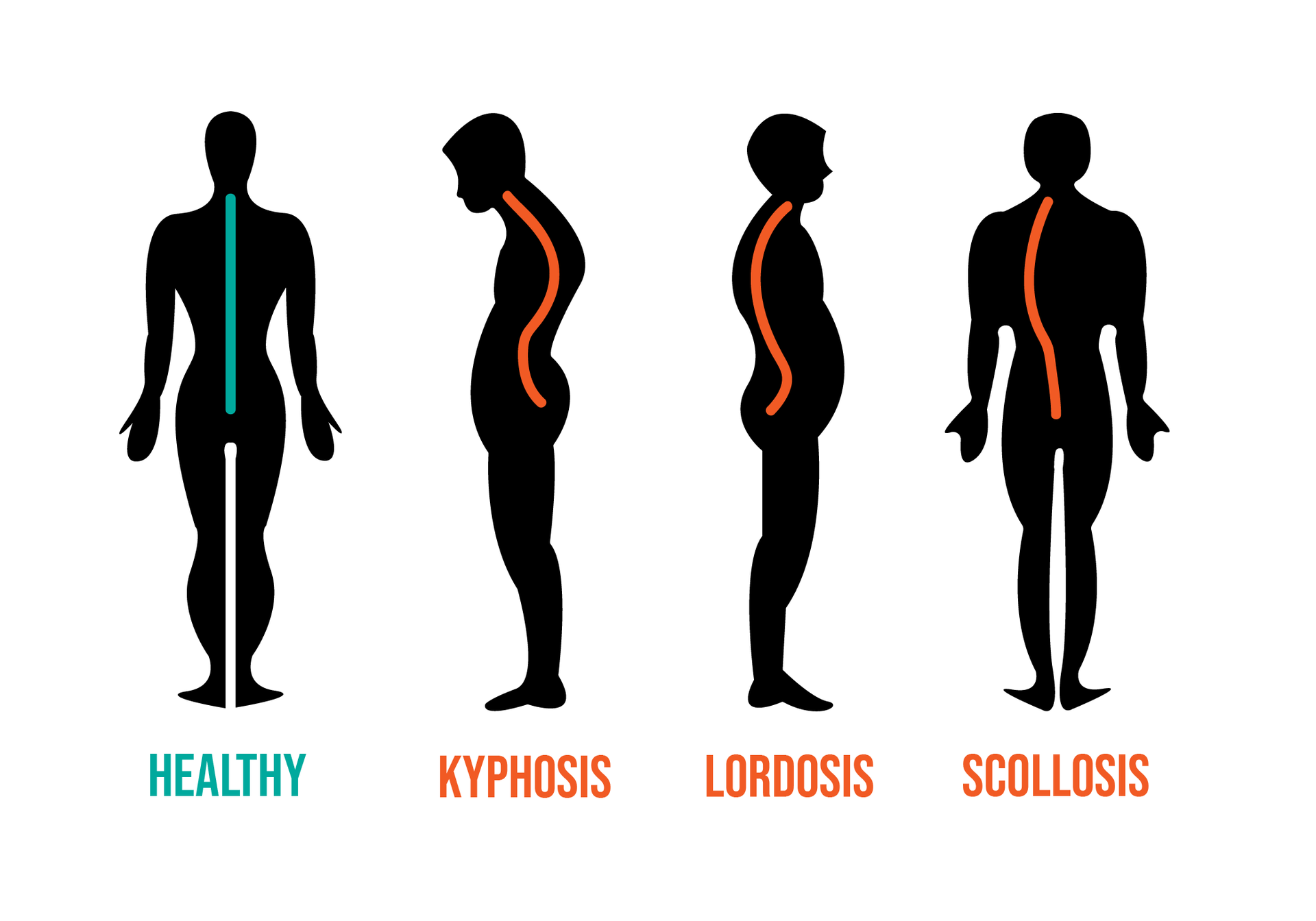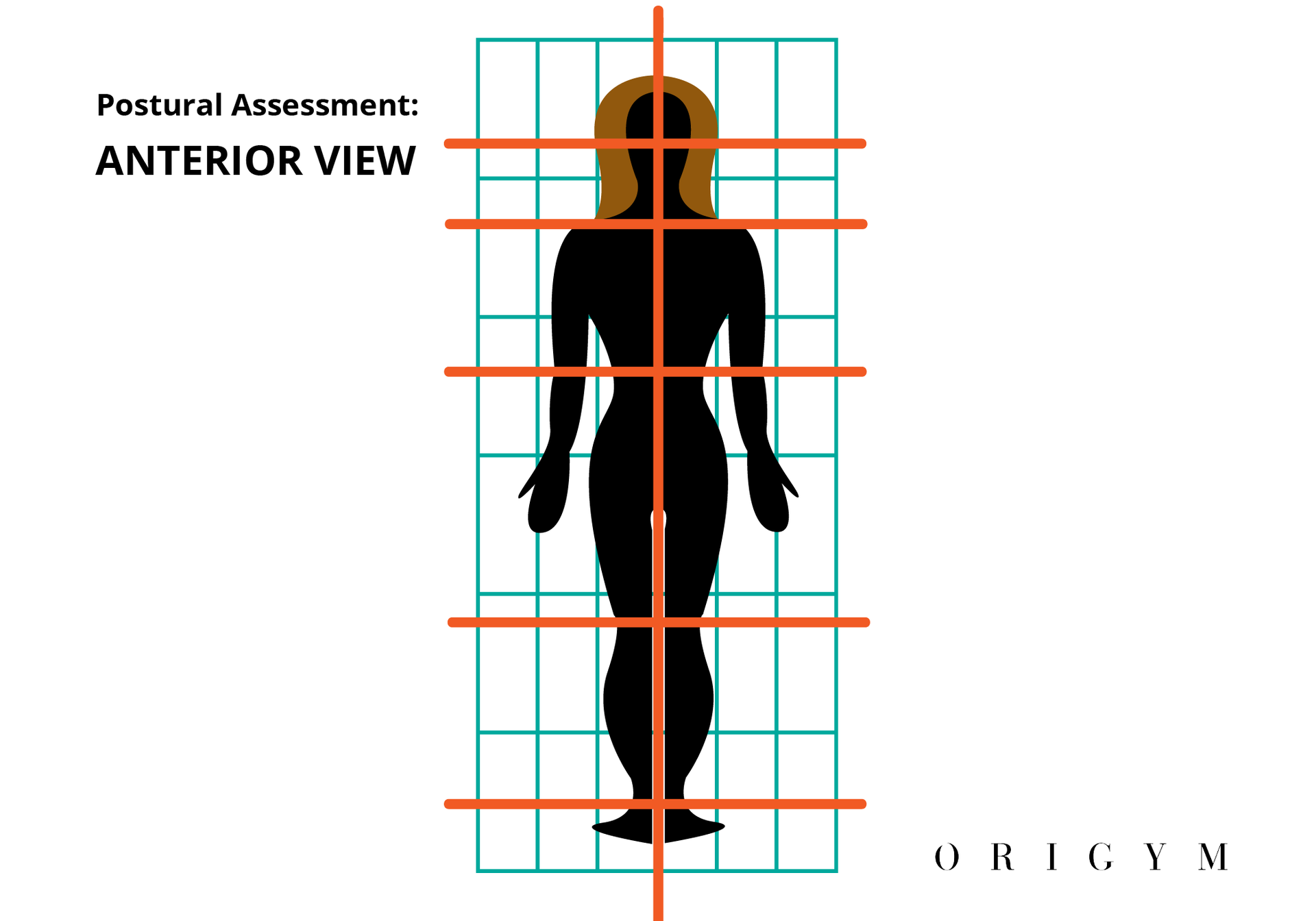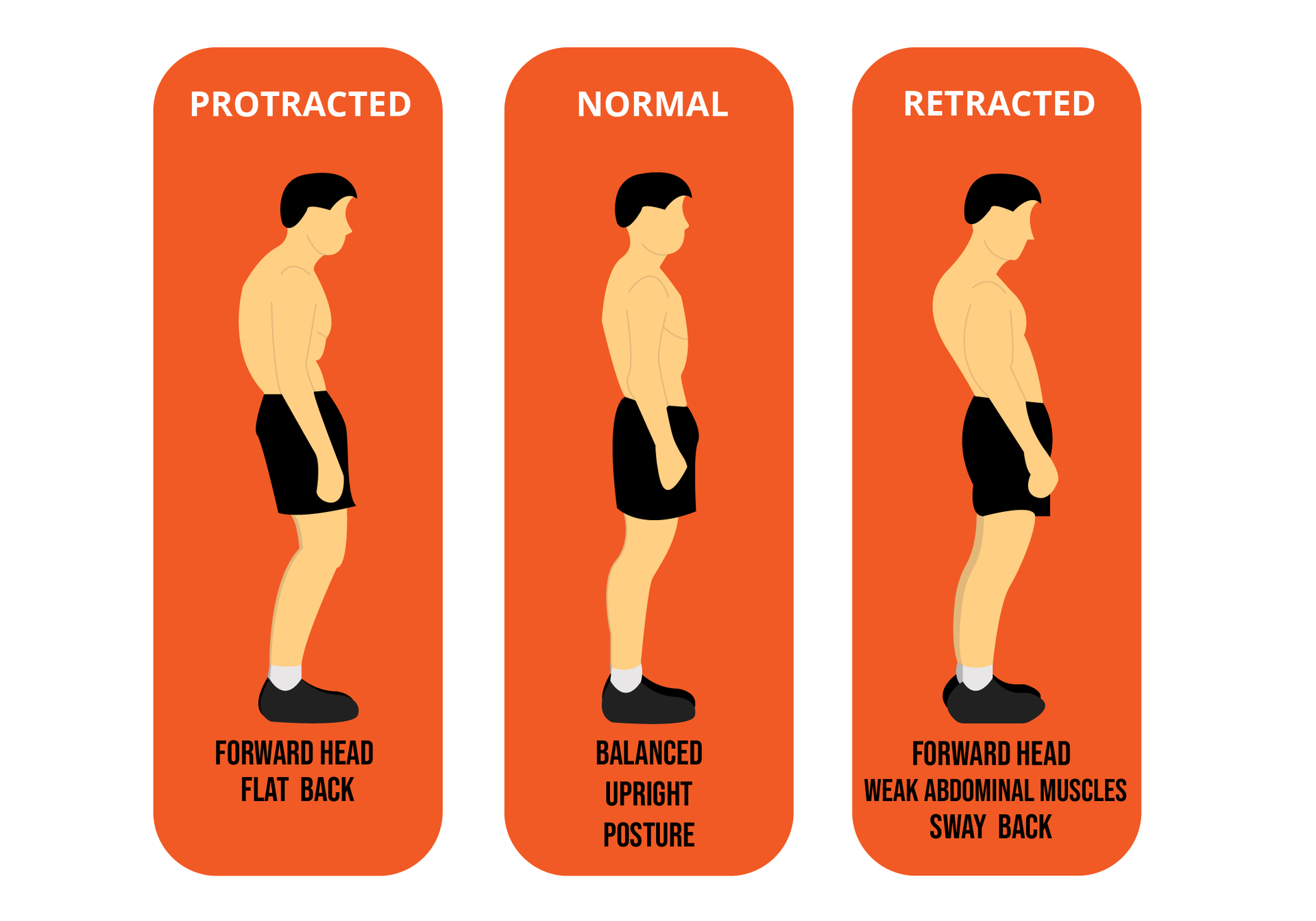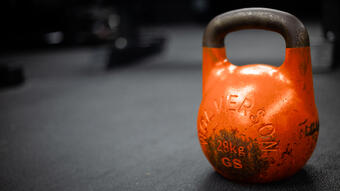Postural Assessment: Guide For Fitness Professionals
If you want to know what a postural assessment is, how it works, or why a fitness professional would carry one out, then you’ve come to the right place.
We’ve answered all of your burning questions from how to carry out observational analysis, to the benefits of performing a postural assessment for personal trainers, sports massage therapists, and of course, clients!
But first, why not continue to help clients with a range of different health problems by checking out our Level 4 Fitness Courses, specifically our Sports Nutrition Course. Have them reach their goals much faster by providing nutrition advice alongside their training programmes.
Find out more by enquiring today and download our course prospectus here!
EXPERT ADVICE ON BOOSTING YOUR PT INCOME
12 Ways You Can Boost Your PT Income!
What Is A Postural Assessment?

A postural assessment, also known as a postural analysis or a postural alignment assessment, is an observational assessment that is often carried out as the first step of a full physical assessment.
Postural analysis tests are part of kinesiology, the part of physical therapy that focuses on studying the body's anatomy and the physiology of the way that the body moves.
To carry out this kind of assessment properly, a good working knowledge of the human body and how it works is absolutely essential. But, we’ll talk more about who can and should carry out postural assessments shortly.
For now, the first thing to know is that a postural assessment is used to analyse a person’s static posture and their alignment.
Performing a postural assessment allows you to look at a person's overall alignment and assess how their body is moving and functioning and how their muscles and joints work together.
The purpose of this is to observe the person’s posture and then interpret the implications of what is seen.
In the simplest terms, that means looking for any abnormalities and imbalances, and then assessing how they are affecting the way that the person’s body moves and functions.
So, What Can Be Observed By Carrying Out A Posture Analysis?
Carrying out a postural assessment allows the assessor to learn a lot about a person’s muscular structure just by looking at them.
A postural analysis can determine whether a person has any postural deviations, imbalances, muscle weaknesses, or any other faults in their movement patterns which could be causing pain or discomfort.
By carrying out this postural alignment assessment, the assessor will be able to identify which muscles are overactive (or ‘short and tight’) compared to those that are underactive (or ‘long and weak’).
Through a postural analysis observation, the assessor can also test range of movement so that any areas of weakness or stiffness can be identified.
If any abnormalities or muscle imbalances are highlighted, carrying out postural analysis should be able to identify any underlying causes so that they can then be dealt with.

Although this kind of observational assessment can be carried out to seek answers to a client's complaints of pain or discomfort, it’s important to note that imbalances and abnormalities can often be observed in clients who are not experiencing any physical discomfort.
Regardless of whether the client is experiencing pain or not, it’s still important to recognise and then deal with any and all problems highlighted.
Any abnormalities and imbalances that aren’t dealt with could cause pain, hold the client back from reaching their peak performance, or potentially lead to an injury further down the line.
Become a Level 4 Nutrition Specialist Help clients further by offering nutrition advice with our Level 4 Sports Nutrition qualification!
Who Can Carry Out A Postural Assessment?
Before we explain how to carry out a posture assessment, we thought we’d answer your questions about who exactly is qualified to perform these tests.
Postural analysis tests can be carried out by trained professionals, including Osteopaths and Physiotherapists.
Fitness professionals, including sports massage therapists, pilates instructors, yoga teachers, and personal trainers can also be qualified to carry out these assessments. However, this is only if they have the right training.
If you’re a fitness professional wondering if you can perform posture analysis, you might need to complete appropriate Continuing Professional Development (CPD) Fitness Courses that qualify you to perform this specific task.
The overall aim of a postural alignment assessment is to identify any issues or postural abnormalities, and then address them by introducing any necessary corrections.
These corrections usually include a specific programme of appropriate exercises, stretches, and lifestyle changes, so it makes sense for a fitness professional to carry out this kind of assessment.
For example, if you become a Yoga Instructor, a lot of your focus will be on helping clients to stretch or ‘lengthen’ their muscles, so it helps to know which of the client’s muscles are short and tight so that a specific programme can be put into place.
Want to know more about postural assessment for personal trainers and sports massage therapists specifically? Well, here it is.
Postural Assessment and Sports Massage
Any well-reputed and accredited sports massage course will cover the practical elements of massage therapy and the science that goes behind it, too.

That means you’ll learn how to identify postural abnormalities and muscular imbalances and how to correct them, too.
As standard, all good sports massage therapists should perform a posture assessment before going ahead with their session.
This is one of the main roles of a sports massage therapist as the information acquired through a posture assessment should be considered when working with any sports massage client.
That way the client can get the most out of their sessions, whether that means helping the client to reach their peak performance or reducing any pain they’re experiencing.
Postural Assessment For Personal Trainers
As we mentioned a little earlier on, the key objective of a posture assessment is to deal with any imbalances or abnormalities. Again, the best way to deal with such things is through exercises, stretches, and small lifestyle changes.
As with most things in the world of health and fitness, a one size fits all plan just won’t work. That’s why specific programmes are absolutely necessary - but if you’re currently a qualified Level 3 Personal Trainer, you’ll know that already.
A postural alignment assessment is an excellent analysis to carry out with new personal training clients because it’s simple to carry out and it gives you a lot of information. This is important to make money as a personal trainer as it shows clients the extent of your knowledge from the start, making them more likely to recommend you to others.
Understanding your client's posture is just as important within personal training as it is in sports massage therapy, especially as exercises and stretches are the best way to correct issues such as muscular imbalance.
Posture and personal training can work hand in hand, especially as any postural abnormalities can impact your client’s movement pattern. For example, their ability to perform a squat properly.
Instead of having a frustrated client who is struggling to progress, carrying out postural analysis can look further into their movement and assess how their muscles and joints are working together.
From there, you might identify an issue with their posture or an underactive muscle, which you can then deal with by creating a programme that is specific to the needs of that individual client.
For example, if you identify tight muscles, you can then add flexibility into their programme.
Even if your client doesn’t have a clear restriction in their movement, or they aren’t experiencing pain, muscle imbalances and abnormalities in posture that go unnoticed can lead to injuries or reduced performance down the line.
That goes for sports massage clients, too!
EXPERT ADVICE ON BOOSTING YOUR PT INCOME
12 Ways You Can Boost Your PT Income!
Posture Analysis for Personal Training Sales

Obviously, the best thing about getting a CPD in corrective exercise is that your clients will benefit as a result of your ability to carry out postural analysis tests, but having this additional skill under your belt is also a brilliant way to sell as a personal trainer.
Starting with a posture assessment, or offering one as part of a free introduction session, is a great way to show the client that you know what you’re doing.
Your client will see that you’re knowledgeable, professional, and going the extra mile to make sure that their programme is the best that it could possibly be.
This builds a trusting relationship between you and your client, meaning that they’ll continue with your programme and hopefully even recommend tour services to one of your friends.
Postural Alignment: Normal VS Abnormal Posture
It’s all very well for us to say that a posture analysis looks for postural abnormalities and imbalances, but what exactly are they?
Before we can talk about what happens during a postural assessment, it only makes sense to cover the different kinds of postural deviations and the factors that affect posture, first.
When somebody has a normal or ‘ideal’ posture, the muscles on either side of the body are balanced, the pelvis is neutral, and the spine has a natural curvature to it.
With good posture, there is an imaginary line in the lateral view that goes straight from the earlobe to the top of the shoulder, through the center of the body, and then just behind the knee joint, ending in the middle of the ankle joint.
Abnormal postures can occur when a person's centre of gravity, and therefore their bodyweight, is shifted away from the centre of their body, this means that the muscles on one side of the body have to work harder to compensate and keep the person's posture stable.
Postural deviations can be caused by a range of different factors, including anatomical, occupational, social and cultural, and recreational factors.
For example, anatomical factors include conditions such as Scoliosis, and occupational factors cover any postural differences that result as an effect of work, such as working in an office and spending a lot of time being sedentary.
The main conditions that occur as a result of posture deviations include:
- Lordosis
- Kyphosis
- Scoliosis

Lordosis is characterised by an excessive inward curve at the lower back. Whereas, Kyphosis is defined by a significant outward curve which can cause a rounded upper back, in extreme cases this can cause a postural deformity known as a hunchback.
Finally, Scoliosis is a medical condition where a person’s spine has a sideways curve. This can be C-shaped, curving either to the right or the left, or it can often be curved into the shape of an S.
Here’s a scientific definition from Dale (2012):
"Posterior postural views allow screening for scoliosis. Scoliosis is a lateral and sometimes rotatory curvature of the spine resulting in a “C”- or “S”-shaped curve as assessed from the posterior view. Beginning proximally, shoulder and scapular symmetry are observed. Scoliosis may cause one shoulder to be elevated on one side.”
As well as these postural conditions, a posture analysis can also be carried out to assess and then deal with overuse injuries like shin splints and Achilles tendinopathy.
The assessor can get a good idea of the patient's posture, as well as their foot and ankle mobility, shoulder mobility, trunk stability, and rotation stability.
Not only that, but the assessor can also gage functional movement and deep squat movement - all by just observing the patient standing in their natural posture!
Become a Level 4 Nutrition Specialist Help clients further by offering nutrition advice with our Level 4 Sports Nutrition qualification!
What Happens During Posture Analysis?
Now that you know who can perform postural analysis, and what they’re looking for in terms of postural conditions, we’re going to finish by explaining exactly what the process involves.
Whether you have a postural assessment coming up or you’re somebody interested in a career in the fitness industry wanting to know more about how to carry out this assessment, this is what happens during a posture analysis.
Postural Alignment Assessment: What Should Clients Wear?
As we mentioned above, this is an observational assessment.
So, before the assessment even starts, as a client or an assessor the first thing to cover is making sure that the client is wearing tight-fitting clothing, gym clothes are best.
The client will also need to take off their shoes for the duration of the assessment.
This is to ensure that the relevant muscles and body margins are visible to the assessor and that the client is standing in their natural posture.
Postural Assessment Form
When it comes to actually carrying out the analysis, the assessor will use a postural assessment form.
This is usually a simple checklist, split into the three sections for each angle of the body that the client will be assessed from. Those angles are: anterior, posterior, and lateral.
A postural assessment checklist can be relatively simple, for example, a quick tick box form that lists all of the key areas that the assessor should be looking at.

Any abnormalities identified can then be noted down separately so that their implications can be investigated further.
Alternatively, there are some more detailed postural analysis form templates available online which actually have tick boxes for specific abnormalities, for example for the lower body, the checklist might look something like this:

These kinds of templates are really useful as they gather all of the information in one place, and they make the results really easy to understand and interpret.
Postural Analysis Tests: The Process
Outside of ‘What should I wear?’, the most common question clients have is about how long their posture analysis will take. Fortunately, it only takes around 30 minutes to carry out the full assessment.
The whole process is really easy for the client, all they need to do is stand upright in their natural posture, position their feet roughly shoulder-width apart, and hold their arms by their sides.
As the assessor, you’ll then need to work through your checklist.
So you know what the checklist looks like (thanks to our postural assessment form template above), but what exactly will be on the checklist and how do you carry out the postural analysis?
We explained that this form will usually be split into 3 sections: anterior, posterior, and lateral.
These are the three 3 views or ‘planes’ that the client will be assessed from. Usually, the assessor will start with the anterior (front) view, followed by a posterior (back) view, finishing by looking at the client from a lateral (side) view.
Looking at the client from all three of these angles is absolutely essential.
This kind of assessment works best when all three planes of view are interpreted together as not all imbalances may be visible from a certain angle, or there could be an imbalance in one part of the body which is causing difficulties in a different area.
EXPERT ADVICE ON BOOSTING YOUR PT INCOME
12 Ways You Can Boost Your PT Income!
Postural Assessment: Anterior View
For each view, it’s easiest to start at the top to the bottom of the body.

So, for the anterior view start by observing the client’s head, first looking at the line from the tip of the nose through to the middle of their chin and then to the top of their sternum.
When observing this line, you’re looking to see if the head is tilted towards one side or if it's rotated at all.
Working down the body, the next check is a comparison of the level of your client’s shoulders and the angle of their collar bones.
On to the middle of the body, next on the checklist is comparing each side of the iliac crests. If you’re not familiar with this terminology, this is the part of your hip bone that is visible at the front of your body. In more basic terms, this part of postural analysis tests aims to see if the hips are level.
In this view, the anterior superior iliac spine (ASIS) is the next landmark to compare, ensuring that they are on each side of the body.
Next, the assessor needs to check the distance between the arms and the trunk of the body by comparing whether this distance is equal on each side of the body.
Following that is a quick check to see if there are any differences in arm length by looking at the level of the fingertips.
Looking at the lower half of the body, next on the postural assessment checklist is to check the knees. This includes comparing the ‘apex of the patella’ or more simply put, the top of the kneecaps, to see if they are the same height.
Following that, the position of the knees should also be observed. The purpose of this part of the postural analysis is to assess whether the knees are in a normal position, or if they are rotated into a Varus (outward) position or a Valgus (inwards) position.

To finish the anterior part of the assessment, quickly compare the level of the bottom of the tibia, known as the medial malleoli, which is visible on the inside of each ankle.
Postural Assessment: Posterior View
After completing the postural assessment sheet for the anterior plane, the assessment moves on to observing the client from the posterior view.
Again, it’s easiest to start the observation at the top of the body and work down, that way no important landmarks or comparisons will be missed.

First, look at the back of the head and assess whether the head looks like it is tilted or rotated from this angle.
Following that, the observation focuses on the spine, with the main aim of looking for signs of Scoliosis. Some of the main reference points that will be on the checklist are the acromion and the scapular spine.
Plus, you should check the distance between the client’s spine and the medial borders of their shoulder blades and assess whether the shoulder blades are symmetrical on each side.
Most postural assessment forms follow work down the client’s body, so next on any checklist should be a comparison of the level of the iliac crests (the hip bone) to see if they are the same height, and then the same for the posterior superior iliac spine.
If visible through the client’s clothing, you can also compare the gluteal fold on the left and right side of their body.
Moving to knee level, you should assess the client’s knee position to check for abnormal Valgus or Varus knee positioning from this angle, too.
The final check in this view is back to the medial malleoli, where you should look to see how many toes are visible at either side of each foot. If there are more toes visible to the side of one foot, this could indicate a problem elsewhere, most likely that one leg is rotated more than the other.
Become a Level 4 Nutrition Specialist Help clients further by offering nutrition advice with our Level 4 Sports Nutrition qualification!
Postural Assessment: Lateral View
The final part of the assessment is observing the client from a lateral (side on) view.
In this part of the observation, the aim is to assess the imaginary line that we discussed earlier.

This imaginary line is known as the posture plumb line or the line gravity, and it runs from the ears to the ankles.
If somebody has good or normal posture, a postural analysis test will show that their ears, shoulders, hips, knees, and ankles all fit onto this line when the person is observed from a lateral view.
Starting back at the top of the patient's body, first to tick off the checklist is a check of the position of the client's head. In this view, the aim is to assess whether their head is positioned forwards or backwards excessively.
This is done by observing whether the earlobes line up with the middle of the shoulders.
Not only can this show whether the clients head is in an unbalanced position, it can also allow the assessor to see whether they have are protracted or retracted.

Moving further down, assessing the spine in this view is a good way to look for signs of spinal abnormalities, including Lordosis and Kyphosis.
When observing the client's posture from the level of the pelvis, look for any excessive curving of the spine by assessing the angle or ‘pelvic tilt’ between the ASIS and the posterior superior iliac spine (PSIS).
The angle of pelvic tilt should be around 15 degrees. According to Preece et al. (2008), an angle that is significantly greater or smaller than this could cause a range of potential injuries or postural abnormalities:
“A forward rotation of the pelvis, referred to as anterior pelvic tilt, is accompanied by an increase in lumbar lordosis and is believed to be associated with a number of common musculoskeletal conditions, including low back pain and anterior cruciate ligament deficiency. In addition, anterior pelvic tilt has been associated with a loss of core stability, and therefore the degree of pelvic tilt has been used to assess core strength.”
After assessing the pelvic tilt, the postural analysis ends by having one last look at the knees. This time, observing whether the knees are hyperextended.
If this is the case, it could be related to further postural abnormalities at shoulder level or an abnormal pelvic tilt angle.
EXPERT ADVICE ON BOOSTING YOUR PT INCOME
12 Ways You Can Boost Your PT Income!
Before You Go!
In addition to conducting postural assessments, why not continue growing your personal training service? Expand your client base and offer a range of different health services, starting with our Level 4 Sports Nutrition Course.
Contact our dedicated team to find out more and download our course prospectus to see what other qualifications you can gain.
References
Dale, R. B. (2012). Clinical Gait Assessment. Physical Rehabilitation of the Injured Athlete (4). Available at: www.sciencedirect.com/topics/postural-assessment
Preece, S., Wilan, P., Nester, C. J., Graham-Smith, P. and Bowker, P. (2008). Variation in pelvic morphology may prevent the identification of anterior pelvic tilt. Journal of Manual & Manipulative Therapy. 16 (2), pp. 113-117.

